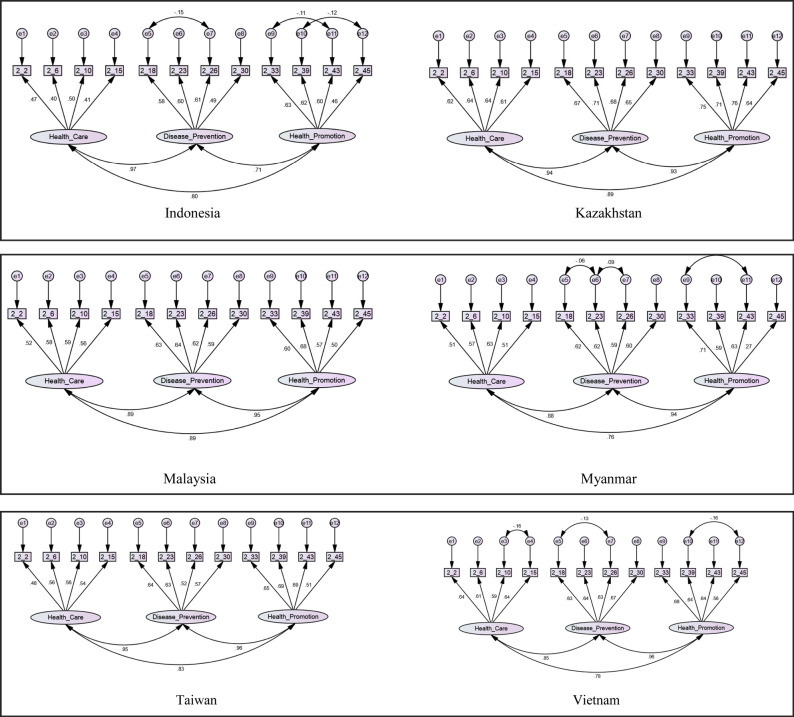Figure 2.
Structure equation model of health literacy with 12 selected items from 12 conceptual components loading into three domains of health (health care, disease prevention, health promotion) in six Asian countries. Note. 2_2, 2_6, 2_10, 2_15, 2_18, 2_23, 2_26, 2_30, 2_33, 2_39, 2_43, and 2_45 are selected questions from the 47-item European Health Literacy Questionnaire (HLS-EU Consortium, 2012) and pose the following questions:
- 2_2 …find information on treatments of illnesses that concern you?
- 2_6 …understand the leaflets that come with your medicine?
- 2_10 …judge the advantages and disadvantages of different treatment options?
- 2_15 …call an ambulance in an emergency?
- 2_18 …find information on how to manage mental health problems like stress or depression?
- 2_23 …understand why you need health screenings (such as breast exam, blood sugar test, blood pressure)?
- 2_26 …judge which vaccinations you may need?
- 2_30 …decide how you can protect yourself from illness based on advice from family and friends?
- 2_33 …find out about activities (such as meditation, exercise, walking, Pilates etc.) that are good for your mental well-being?
- 2_39 …understand information in the media (such as Internet, newspaper, magazines) on how to get healthier?
- 2_43 …judge which everyday behavior (such as drinking and eating habits, exercise etc.) is related to your health?
- 2_45 … join a sports club or exercise class if you want to?

